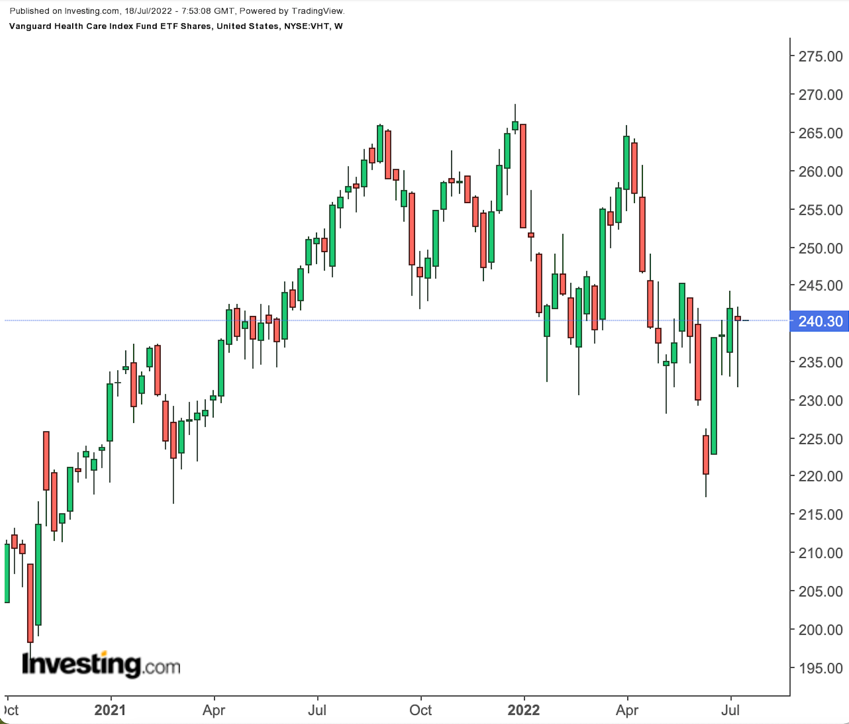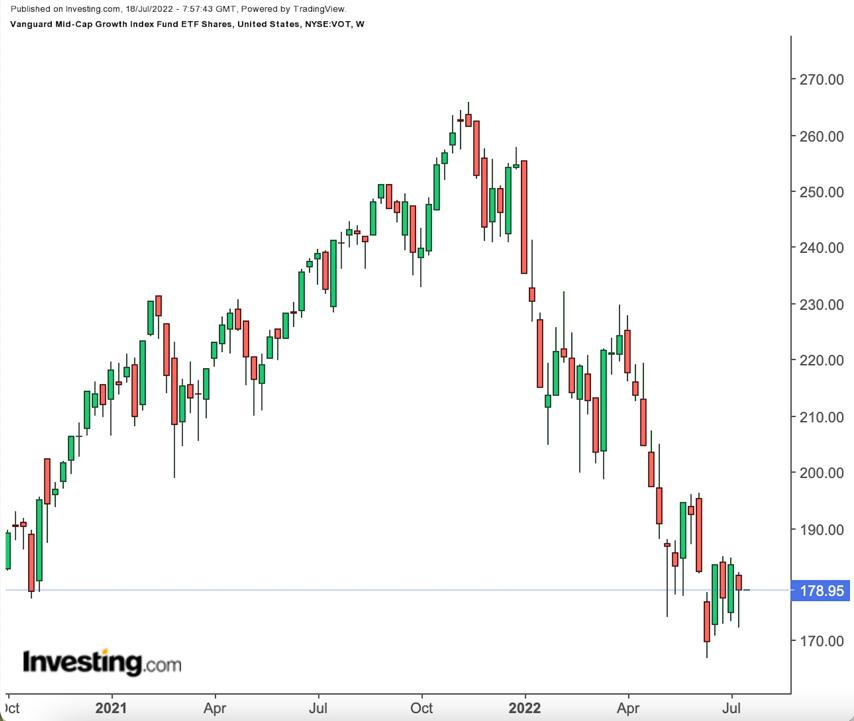5 big analyst AI moves: Apple lifted to Buy, AI chip bets reassessed
Investors looking for low cost exchange funds (ETFs) typically put those offered by Vanguard high on their radar screen. In terms of ETF assets under management (AUM), the investment management giant has over $2 trillion, offering "core allocation options, tactical adjustment tools, or factor-based strategies.”
Meanwhile, BlackRock (NYSE:BLK) is the largest ETF provider stateside, followed by Vanguard, State Street (NYSE:STT) and Invesco (NYSE:IVZ). Today’s article introduces two Vanguard funds that could appeal to long-term investors looking for diversification during the current earnings season.
1. Vanguard Health Care Index Fund ETF Shares
- Current Price: $240.30
- 52-week range: $217.12 - $268.72
- Dividend yield: 1.33%
- Expense ratio: 0.10 % per year
In 2020, the US spent over $4.1 trillion in health care and close to a third of that amount went to hospital care. Physician services and other personal health care each had a slice of over 14%, followed by prescription drugs at 8.4%.
Health care spending is almost a fifth of the nation’s Gross Domestic Product (GDP). Meanwhile the US is ageing fast, a demographic shift which typically leads to increased health care spending. By 2040, the number of Americans aged 65 or older will reach $80 million.
Therefore, Wall Street pays close attention to the diverse range of companies in the health care industry. Our first fund, the Vanguard Health Care Index Fund ETF Shares (NYSE:VHT), invests in domestic biopharma companies, as well as businesses that offer medical or health care products, technology, or services. The fund was first listed in January 2004 and AUM stands at $18.6 billion.

VHT, which tracks the Spliced US Investable Market Health Care 25/50 Index, currently holds 465 stocks. In terms of sectoral allocations, we see pharmaceuticals (28.9%), biotechnology (17.6%), health care equipment (17.0%), managed health care (13.10%) and life sciences tools & services (12.20%).
Close to half of the portfolio is held in the leading 10 stocks, making VHT a highly concentrated fund. Among the top holdings are UnitedHealth (NYSE:UNH), Johnson & Johnson (NYSE:JNJ), Pfizer (NYSE:PFE), AbbVie (NYSE:ABBV), Eli Lilly (NYSE:LLY), Merck (NYSE:MRK), and Thermo Fisher Scientific (NYSE:TMO).
VHT hit a record hit at the end of 2021 but is down 9.8% year-to-date. Trailing price-to-earnings (P/E) and price-to-book (P/B) ratios stand at 21.7x and 4.5x. Long-term investors looking to buy a basket of US health care names should research VHT further.
2. Vanguard Mid-Cap Growth Index Fund ETF Shares
- Current Price: $178.95
- 52-week range: $166.75 - $265.83
- Dividend Yield: 0.62%
- Expense ratio: 0.07% per year
Mid-cap shares typically have market capitalizations between $2 billion and $10 billion. Recent research highlights: “… US mid-cap companies offer untapped potential for investors… Over the 20-year period ended 3/31/22, investors in mid-caps have experienced higher returns and lower risk relative to investors in small-caps.”
Therefore, our second ETF to consider this earnings season is the Vanguard Mid-Cap Growth Index Fund ETF Shares (NYSE:VOT), which focuses on mid-capitalization growth companies. The fund was first listed in August 2006, and net assets stand at $17.9 billion.

VOT tracks the performance of the CRSP US Mid Cap Growth Index, and holds 182 stocks. Technology shares have the largest slice with 26.0%. Next come industrials (17.0%), health care (16.0%), consumer discretionary (11.7%) and real estate (8.1%).
The top 10 stocks comprise close to 14% of the fund. Synopsys (NASDAQ:SNPS), known for software for semiconductor design; Cadence Design Systems (NASDAQ:CDNS) whose software is used by chip makers; IQVIA (NYSE:IQV), which provides clinical trial solutions for the life sciences industry; real estate investment trust (REIT) Realty Income (NYSE:O) and electronic components group Amphenol (NYSE:APH) lead the names on the roster.
VOT saw an all-time high in November 2021, but has lost about a third of its value since then. Trailing P/E and P/B ratios are at 28.3x and 4.4x. There could be further volatility in VOT in the coming days, but long-term investors could regard further declines as an opportunity to enter into the mid-cap space.
